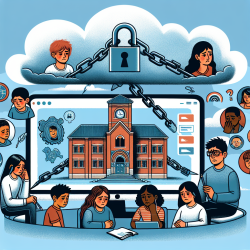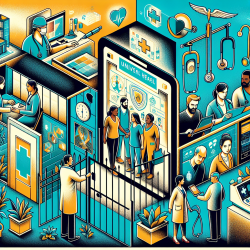Introduction
In the ever-evolving field of healthcare, staying updated with clinical best practices is crucial for practitioners. The recent study titled "Experimental evidence on the role of shared protocols as coordination device on clinical best practices" offers valuable insights into how shared protocols can enhance coordination among physicians. This blog aims to help practitioners improve their skills by implementing the outcomes of this research or by encouraging further exploration.
Understanding the Research
The study explored the impact of shared protocols, or guidelines, on the coordination of clinical best practices among physicians. By using clinical vignettes, the research assessed how physicians evaluated treatment appropriateness and whether guidelines improved their coordination. The findings revealed that slightly more than half of the physicians coordinated on appropriateness evaluations, and the release of guidelines significantly improved conformity and coordination.
Key Takeaways for Practitioners
- Embrace Shared Protocols: Implementing shared protocols can enhance coordination and improve patient outcomes. Guidelines act as a common language that helps align treatment decisions among practitioners.
- Engage in Continuous Learning: Stay informed about the latest guidelines and clinical best practices. Regularly attending conferences, webinars, and reading relevant publications can keep you updated.
- Foster Collaboration: Encourage open communication and feedback exchange among colleagues. A collaborative environment promotes shared understanding and better coordination.
- Leadership Matters: Having a leader in medical teams can facilitate adherence to guidelines and enhance coordination. Leadership plays a crucial role in guiding teams towards clinical best practices.
Encouraging Further Research
While the study provides valuable insights, it also opens avenues for further research. Practitioners are encouraged to explore the following areas:
- Impact of Guidelines on Innovation: Investigate how guidelines influence the adoption of innovative techniques and treatment practices.
- Role of Technology: Explore how digital tools and platforms can aid in the dissemination and implementation of guidelines.
- Patient-Centered Approaches: Research how shared protocols can be tailored to individual patient needs while maintaining coordination.
Conclusion
Shared protocols play a vital role in enhancing coordination among healthcare practitioners. By embracing guidelines, engaging in continuous learning, fostering collaboration, and exploring further research, practitioners can improve their skills and contribute to better patient outcomes. For a deeper understanding of the research, I encourage you to read the original paper.
To read the original research paper, please follow this link: Experimental evidence on the role of shared protocols as coordination device on clinical best practices.










